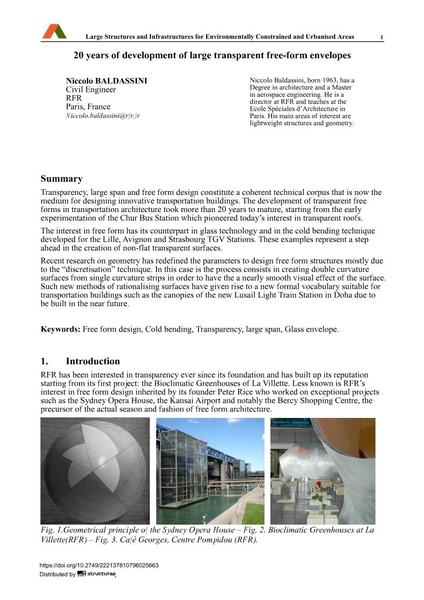20 years of development of large transparent free-form envelopes

|
|
|||||||||||
Bibliographic Details
| Author(s): |
Niccolò Baldassini
|
||||
|---|---|---|---|---|---|
| Medium: | conference paper | ||||
| Language(s): | English | ||||
| Conference: | IABSE Symposium: Large Structures and Infrastructures for Environmentally Constrained and Urbanised Areas, Venice, Italy, 22-24 September 2010 | ||||
| Published in: | IABSE Symposium Venice 2010 | ||||
|
|||||
| Page(s): | 528-529 | ||||
| Total no. of pages: | 6 | ||||
| Year: | 2010 | ||||
| DOI: | 10.2749/222137810796025663 | ||||
| Abstract: |
Transparency, large span and free form design constitute a coherent technical corpus that is now the medium for designing innovative transportation buildings. The development of transparent free forms in transportation architecture took more than 20 years to mature, starting from the early experimentation of the Chur Bus Station which pioneered today’s interest in transparent roofs. The interest in free form has its counterpart in glass technology and in the cold bending technique developed for the Lille, Avignon and Strasbourg TGV Stations. These examples represent a step ahead in the creation of non-flat transparent surfaces. Recent research on geometry has redefined the parameters to design free form structures mostly due to the “discretisation” technique. In this case is the process consists in creating double curvature surfaces from single curvature strips in order to have the a nearly smooth visual effect of the surface. Such new methods of rationalising surfaces have given rise to a new formal vocabulary suitable for transportation buildings such as the canopies of the new Lusail Light Train Station in Doha due to be built in the near future. |
||||
| Keywords: |
transparency Free Form Design cold bending large span Glass envelope
|
||||
